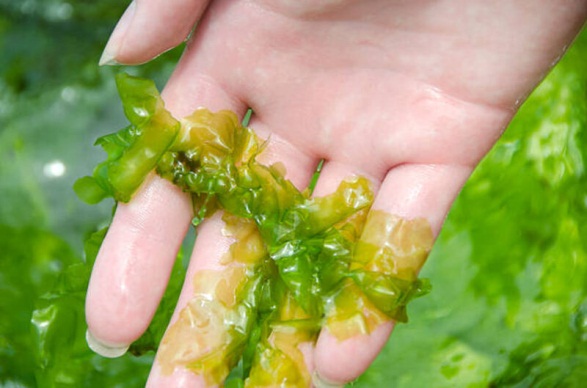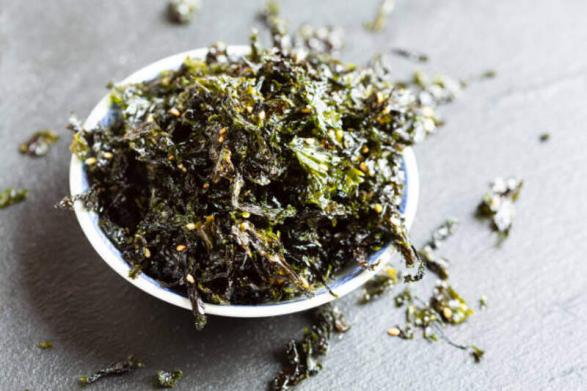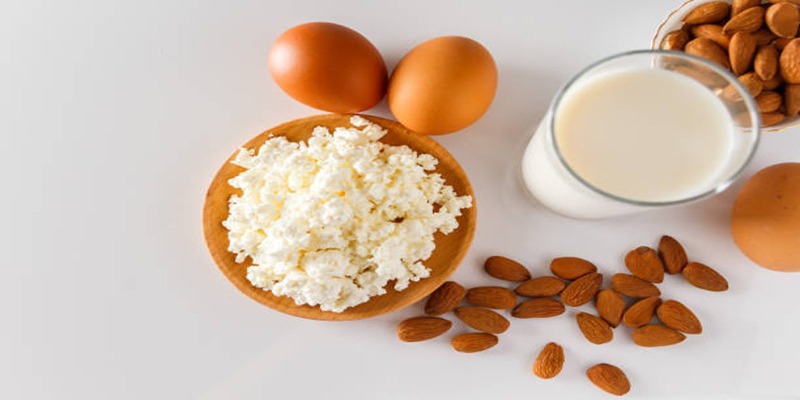Are you looking for a way to add more nutrition and sustainability to your diet? Well, look no further than seaweed! This nutritious superfood has been grown and harvested in oceans around the world for thousands of years, providing countless cultures with essential vitamins and minerals. Seaweed is packed full of nutrients like iodine, zinc, iron, calcium and magnesium that are essential for good health. Plus it's incredibly low-impact on the environment - making it an ideal addition to any sustainable lifestyle. In this blog post, we'll explore why seaweed is such a great choice when thinking about adding healthy foods into your daily routine.
Overview of Seaweed
Seaweed, or sea vegetables as they are sometimes called, is a type of algae that grows in saltwater environments. There are thousands of different types of seaweed, ranging from the well-known nori used to wrap sushi rolls, to lesser-known varieties such as kelp and wakame. Seaweed has been a staple food source in many cultures throughout history, particularly in Asia and the Pacific Islands. It is highly versatile and can be used in a variety of dishes, from soups and salads to snacks and condiments.
Role of Seaweed in Combating Climate Change

In addition to being a nutritious food source, seaweed also plays an important role in mitigating the effects of climate change. As the ocean's largest plants, seaweed absorbs large amounts of carbon dioxide through photosynthesis and converts it into oxygen. This process helps to reduce the levels of this greenhouse gas in our atmosphere, ultimately helping to combat global warming.
Furthermore, sustainable seaweed farming can also help to reduce the amount of carbon emissions produced by traditional forms of agriculture. Seaweed can be grown in coastal areas without the need for fertilizer, pesticides, or freshwater. This means that it has a much lower carbon footprint compared to land-based crops, making it a more sustainable choice for food production.
Rising Trend of Seaweed in the Food Industry
In recent years, seaweed has gained popularity in the food industry as a nutritious and sustainable ingredient. The demand for seaweed products is expected to continue rising in the coming years as more people become aware of its benefits. In fact, some experts believe that seaweed could be the next big superfood trend due to its high nutrient content and low environmental impact.
From seaweed snacks and chips to seaweed-based seasoning and condiments, there are now a variety of products on the market that incorporate this superfood. Additionally, some restaurants have also started incorporating seaweed into their menus, offering dishes that highlight its unique flavors and textures.
Popular Seaweed-based Food Products
Some popular seaweed-based food products that you can find on the market include:
- Seaweed snacks and chips: These are thinly sliced and roasted sheets of seaweed, often seasoned with added flavors like sesame or wasabi.
- Seaweed seasoning and condiments: Many companies now offer seaweed seasoning blends that can be used to enhance the flavor of dishes like rice, noodles, and stir-fries.
- Seaweed pasta and noodles: These are gluten-free alternatives to traditional pasta and noodles that are made from seaweed. They offer a range of health benefits while also being environmentally friendly.
Incorporating Seaweed into Your Diet
If you're interested in adding more seaweed to your diet, there are a few easy ways to do so. You can start by trying out some of the popular products mentioned above, or you can incorporate fresh or dried seaweed into your own recipes. Some ideas include:
- Adding dried seaweed flakes to salads or soups for added texture and flavor.
- Using nori sheets as a wrap for sushi or to make homemade seaweed snacks.
- Making a seaweed salad with fresh ingredients like cucumbers, carrots, and sesame dressing.
Easy and Delicious Seaweed Recipes
Looking for some inspiration? Here are a couple of easy and delicious seaweed recipes to try at home:
Seaweed Chips
- Preheat oven to 350°F (175°C).
- Cut sheets of dried seaweed into desired chip size.
- Brush with olive oil and sprinkle with sea salt and any additional seasoning you prefer.
- Bake for 10 minutes or until crispy.
Wakame Salad
- Soak dried wakame seaweed in water for 15 minutes, then drain and set aside.
- In a separate bowl, mix together soy sauce, rice vinegar, sesame oil, and honey to create a dressing.
- Add the soaked seaweed to the dressing and toss to coat evenly.
- Add in fresh ingredients like chopped cucumbers, carrots, and sesame seeds. Mix well.
- Let the salad sit for 10 minutes before serving to allow the flavors to meld together.
Nutritional Value of Seaweed

Seaweed is packed full of essential vitamins and minerals that are important for maintaining good health. Some of the key nutrients found in seaweed include:
- Iodine: This mineral is essential for thyroid function and metabolism.
- Zinc: Important for immune function and wound healing.
- Iron: Essential for oxygen transport in the body.
- Calcium: Vital for bone health.
- Magnesium: Involved in many bodily processes, including energy production and muscle function.
In addition to these, seaweed also contains high levels of antioxidants and dietary fiber. This makes it a great choice for supporting overall health and well-being.
Conclusion
Seaweed is more than just a trendy superfood - it's a nutrient-dense, sustainable, and versatile ingredient that can benefit both our bodies and the planet. Whether you're incorporating it into your diet for health reasons or to help combat climate change, adding seaweed to your meals is a delicious and easy way to reap its many benefits. So why not give it a try? Your taste buds - and the environment - will thank you. So, let's continue to explore the world of seaweed and discover all the ways it can enhance our lives. Happy eating!




